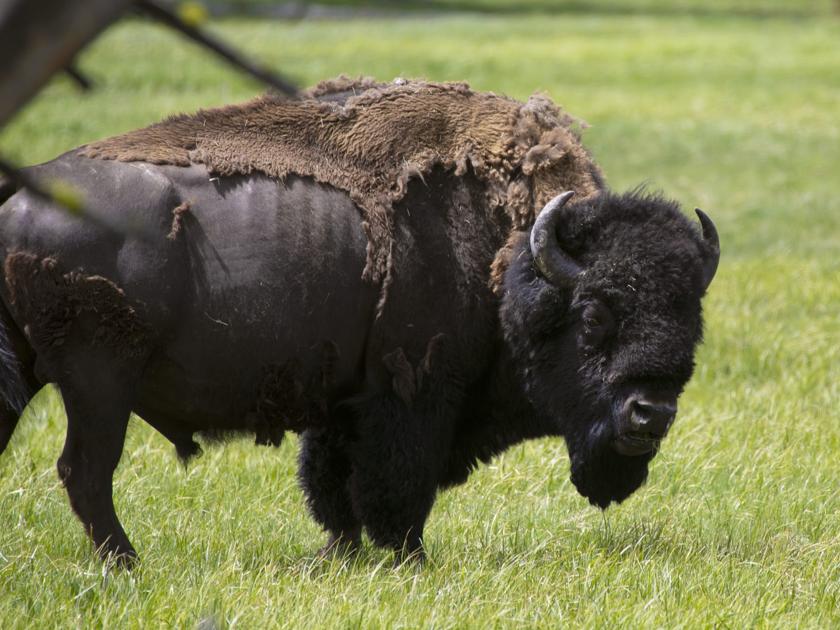Another 11 Yellowstone Park bison head to Fort Peck - The Bozeman Daily Chronicle

More Yellowstone bison went to the Fort Peck Indian Reservation this week, pushing the total number of bison that have been quarantined and released there in the past year above 100.
On Wednesday, 11 bison were shipped from corrals near Corwin Springs to the reservation, according to a news release from Defenders of Wildlife and the Fort Peck Tribes. It was the fourth shipment since April 2019, bringing the total number of bison brought there for the final stage of brucellosis quarantine to 104.
And more are likely coming. About 150 bison are at different parts of the quarantine process at corrals either in Yellowstone National Park or just outside it, according to Chris Geremia, a Yellowstone bison biologist. Some of the bison could be ready to move to Fort Peck as soon as this winter.
The numbers keep stacking up, and though the process takes a long time, Geremia said it’s the right thing to do.
“We’ve been trying for a long time to get live bison out of the park,” Geremia said.
Yellowstone bison are managed under an agreement meant to reduce the risk of spreading brucellosis, a disease that can cause animals to abort. Ranchers and livestock officials fear the spread of the disease could cost Montana its brucellosis-free status, which could have economic consequences for the cattle industry.
Scientists believe about half of Yellowstone’s bison have been exposed to the disease. No bison has transmitted the disease to a cow in the wild, but fears of its spread have led to population control efforts and restrictions on the movement of bison unless they’re deemed brucellosis-free through quarantine.
Quarantine has long been pushed as a way to keep the bison alive and use them to boost other herds around the country. Some bison advocates oppose quarantine, though, because they see it as the domestication of a wild animal that should be allowed to roam freely. Others think it’s too expensive without providing a significant benefit to the public.
In 2016, Yellowstone officials proposed quarantining bison at the Fort Peck Indian Reservation, where tribal officials spent upward of $500,000 building corrals. Legal and political conflicts stalled that proposal, instead leading to a three-part program that happens partially near Yellowstone and partially at Fort Peck.
The program, finalized in 2018, requires that bison undergo a year or more of testing either at the park’s Stephens Creek quarantine facility or at U.S. Department of Agriculture Animal and Plant Health Inspection Service corrals near Corwin Springs.
A final round of testing, called assurance testing, happens at Fort Peck. After that, the tribes will look to send bison to other tribal governments to boost other herds or start new ones.
The first bison to go to Fort Peck under the new program went in February 2019. More joined that August, and another group went in January.
Some of the 11 bulls shipped Wednesday were in a truck driven by former Fort Peck Tribal Chairman Arnt Thomas “Rusty” Stafne, who helped get bison released on the reservation in 2012 and 2014.
“Buffalo are critical to maintaining a link to our cultural legacy,” Stafne said. “After so many years of working on this effort, I’m proud to see this program succeed and bring buffalo home to stay.”
There are 47 bison at various stages of quarantine at the APHIS corrals, according to Geremia. Most are left over from a study the agency was doing years earlier.
Yellowstone has its corrals filled up, too. It held onto 105 bison from its trapping operations to consider for quarantine. One of those animals died in the corrals, likely of disease, Geremia said. Testing on the remaining 104 will begin later this summer.

Comments
Post a Comment